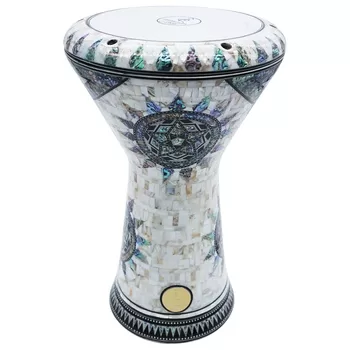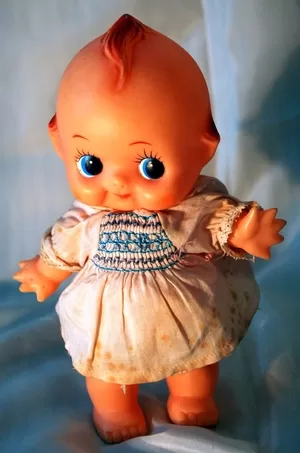Darbuka, also known as the doumbek or goblet drum, is a popular percussion instrument with a rich history in Middle Eastern and Mediterranean music. Let’s delve into the fascinating world of darbuka drums, exploring their history, construction, playing techniques, and cultural significance.
Darbuka drums have a long and storied history that dates back to ancient civilizations. The instrument’s origins can be traced to ancient Mesopotamia and Egypt, where it was originally made from clay and animal skin. Over time, darbukas have evolved in design and materials, with metal and wooden variations becoming more common.
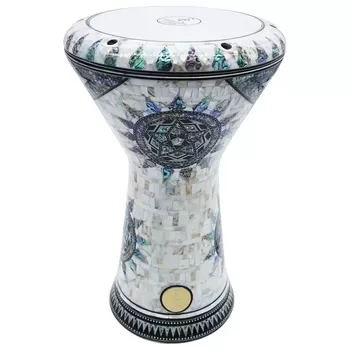

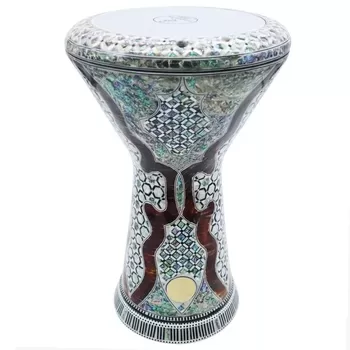

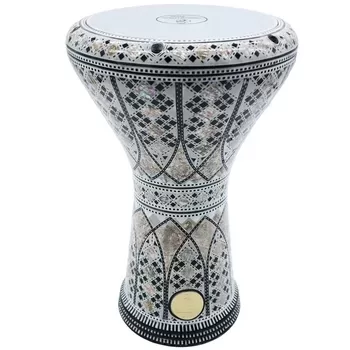

1. Japanese Pearls NG 2.0 Sombaty Gawharet El Fan 18.5″ Darbuka (SOM-508) $560.00 USD
2. Gomeisa NG 2.0 Sombaty Gawharet El Fan 18.5″ Darbuka With Real Blue Mother of Pearl $425.00 USD
3. Sultan Crown Gawharet El Fan Darbuka Doumbek 17” $249.00 USD
Darbuka drums are typically constructed from materials such as clay, metal, wood, or plastic. The choice of material influences the instrument’s tone and resonance. Traditional darbukas are often made of clay, while modern ones are more commonly crafted from metal or wood.
One of the distinctive features of the darbuka is its goblet or chalice-shaped body. It typically consists of a hollow, rounded base, a narrow neck, and a drumhead stretched over the top. The drumhead can be made of various materials like animal skin or synthetic materials. The drum’s design allows for a wide range of tones and timbres, making it versatile in various musical genres.
Playing Techniques
Playing the darbuka requires skill and precision. Here are some common playing techniques:
Doum: Striking the center of the drumhead with the palm produces a deep, resonant sound called a “doum.”
Tek: Hitting the drumhead’s edge with the fingertips creates a sharp, high-pitched sound known as a “tek.”
Ka: Using the fingertips to strike the drumhead’s edge and create a ringing or snapping sound is referred to as a “ka.”
Rolls and Flams: Combining various strokes allows for intricate patterns, rolls, and flams, adding complexity and nuance to the rhythm.
Finger Snaps: Occasionally, darbuka players incorporate finger snaps or claps to add extra layers to the music.
Cultural Significance
Darbuka drums hold a special place in Middle Eastern and Mediterranean cultures. They are a fundamental element of traditional music and dance, and they are often used in a wide range of musical styles, from classical Arabic music to contemporary fusion genres.
In addition to their musical importance, darbukas are an essential part of social gatherings, celebrations, and ceremonies in the Middle East. They bring people together, creating a rhythmic heartbeat that connects individuals through shared experiences and traditions.
Notable Darbuka Players
Hossam Ramzy: An Egyptian percussionist who has collaborated with artists like Peter Gabriel and Shakira.
Ara Dinkjian: An American-Armenian musician and composer known for blending darbuka with various musical styles.
Zohar Fresco: An Israeli darbuka virtuoso, recognized for his innovative approach to percussion.
Darbuka drums are more than just instruments; they are the rhythmic heartbeat of Middle Eastern and Mediterranean music. Their history, construction, playing techniques, and cultural significance make them a captivating and integral part of the world’s musical heritage. Whether you’re an aspiring percussionist or simply a music enthusiast, darbuka drums offer a captivating journey into the mesmerising world of rhythm and melody.

